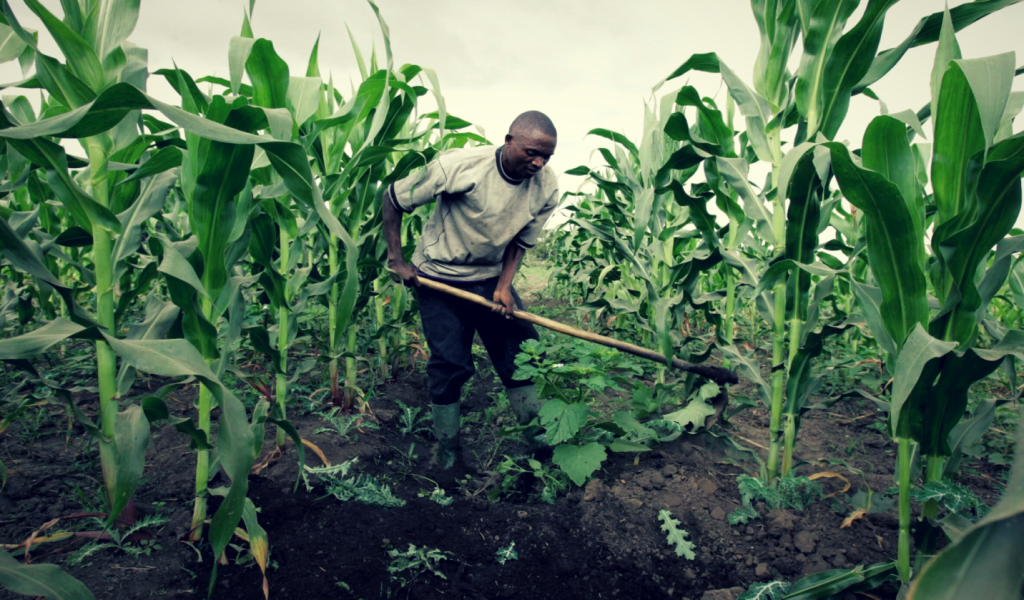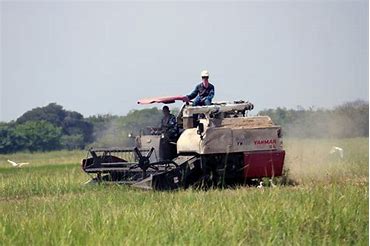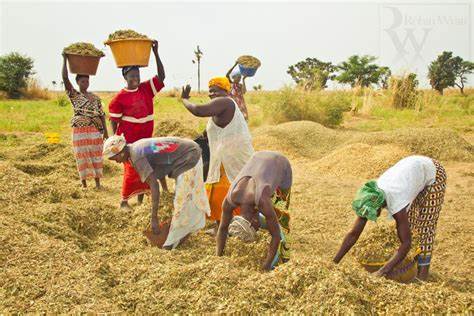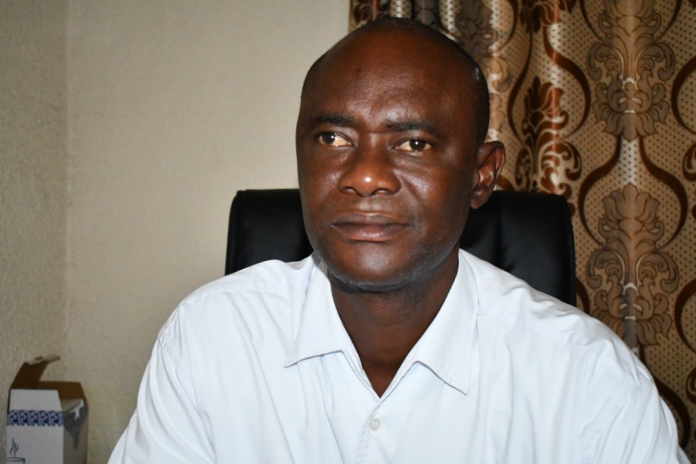By: Albert Baron Ansu
We have to be very upfront in making critical clarifications about certain recurrent terminologies in this cover story. Food security and food self-sufficiency are distinct; lest the wrong impression is given that they are analogous and can be used interchangeably.
We can allude to the classical example of Nigeria to make the situation explicit. The Stears Business article: ‘Nigeria needs food self-sufficiency, not food security’ lays it bare:
“Between 2010 and 2017, the number of undernourished people in Nigeria has more than doubled to 21 million, the biggest jump of any nation in Africa. This means that many Nigerians lack access to nutritious food required for healthy living. Without this food, people starve to death. Moreover, starving people are unproductive people. That is why countries work to ensure that people have access to required food at all times — this is what is known as food security.

Food self-sufficiency, on the other hand, refers to a country’s ability to produce all its food needs without relying on imports. The primary difference between the two is that food security is indifferent about the source, while self-sufficiency only cares about the source…”
African countries have done well in flattening the curve of COVID 19. What this means is that the peak number of people requiring care at a time is reduced, and the healthcare system is not as overwhelmed as it were. What followed this phenomenal feat is the clamour for food.
Food poverty has always been the bane in Africa’s quest to build socio-economic resilience. Food security can be discussed in the continuum of human rights and socio economic rights as enunciated by the United Nations. It brings to mind UN Instruments such as International Covenant on Economic Social and Cultural Rights (ICESCR) as s a multilateral treaty adopted by the United Nations General Assembly on 16 December 1966 through GA. Resolution 2200A (XXI), and came into force on 3 January 1976.
As a continent, the question of giving practical effect to socio-economic and political rights has been elusive, if not a mirage. The political right to vote in elections has been given premium over concerns of addressing perennial food poverty and its attendant adverse effect on morbid and malnourished conditions of women and children, which especially remains a perennial problem.
We can find statistics to put the issue of food insecurity in context from the data source of the World Vision report which excerpt is presented hereunder:
“Malnutrition and food insecurity remain significant challenges in Africa. According to the 2021 State of Food Security and Nutrition report, 282 million people in Africa are undernourished which represents one-third of the worlds undernourished. Africa has also the highest prevalence of food insecurity with 60 per cent of the population of Africa (799 million people) affected by moderate or severe food insecurity in 2020. “If recent trends persist, the distribution of hunger in the world will change substantially, making Africa the region with the highest number of undernourished individuals in 2030”. Moreover, Africa is the only region in the world where the number of children under five with chronic malnutrition is increasing rising from 54 4 million to 61 4 million children between 2000 and 2020. Africa also experiences a high level of wasting; 12.1 million children under five are suffering from acute malnutrition.”
When Ebola struck and wrought a debilitating effect on the sub-region of West Africa for instance, we saw the ripple effect in household poverty. In the worst hit areas of Sierra Leone and Liberia, WFP had to introduce food for asset initiatives with support from the Japanese governments, among others. The World Food Programme (WFP)’s Food Assistance for Assets (FFA) initiative addresses immediate food needs through cash, voucher or food transfers, while at the same time it promotes the building or rehabilitation of assets that will improve long-term food security and resilience.
According to the World Food Program: “Since 2013, FFA programmes in more than 50 countries have helped between 10 and 15 million people each year bring hundreds of thousands of hectares of degraded land back into productive use, plant thousands of hectares of forests, and build scores of wells, ponds and feeder roads, and be trained in livelihood and agricultural practices.”
When we take stock of the legacy of the WFP investment in the face of the present day reality, we can see that there is very little to show for it. And the justification for that can be easily sought in the strangulating clutch of COVID 19 that has even heightened food poverty owing to the open secret of travel restrictions and stymied supply chain of food import and export.
Long before Ebola and COVID, the past had been blighted by failings in strategies such as NEPAD. The New Partnership for Africa’s Development (NEPAD) is the pan-African strategic framework for the socio-economic development of the continent. NEPAD was officially adopted by the AU in 2002 as the primary mechanism to coordinate the pace and impact of Africa’s development in the 21st century.
Its primary objective is to provide a new mechanism, spearheaded by African leaders, to eradicate poverty, place African countries, both individually and collectively, on the path of sustainable growth and development, halt the marginalization of Africa in the globalization process, accelerate the empowerment of women and fully integrate Africa into the global economy.
United Nations and other development partners consider NEPAD as the conduit to channel support to the continent. NEPAD evolved from three initiatives designed to address the complex challenges to growth faced by African states: the Millennium Africa Recovery Plan (MAP), led by former South African President Thabo Mbeki; the Omega Plan, developed by the former President of Senegal, Abdoulaye Wade; and the New African Initiative (NAI), which combined the first two initiatives. In 2001, these were reworked and expanded to provide a framework for all African states. NEPAD was adopted in 2001 by the OAU at the 37th Summit and ratified in 2002 at its first summit.
What can we say about the lofty ambition embedded in NEPAD? It has been a grand failure as food poverty is still with us.
When NEPAD failed we found the Millennium Development Goals rather tantalizing. It was the new mantra for change. While the MDGs focused on eradicating extreme poverty and hunger, the food crisis pushed the hungry over the one billion mark. There is thus a renewed focus on agricultural development, which pivots on the salience of industrial agriculture (as a supply source) in addressing food security. So we are now in the realm of another ambitious agenda that is still groping in the dark in search of Food Self Sufficiency. It is called the Sustainable Development Goal, (SDG).

Goal 2 of the SDG is set to end hunger, achieve food security and improved nutrition and promote sustainable agriculture. This sounds like a loaded agenda and requires multifaceted interventions to be feasible.
African nations have been at different paces and extents in delivering on the target before COVID set in to have a regressive effect on the plan. Now that the continent is opening up for business, there are good signs in countries that are viable in sprawling fallowing lands and the modicum of favorable climate agriculture that is incentivized by the state is the right way to go.
But, as in other weighty ambitious projects, Africa is not going to rely on its resources and devices to solve food poverty and malnutrition. What is deemed as food goes beyond the staple rice, grains, wheat, maize, barley tubers-cassava and potato. We need an equal adequate portion of protein, oil and other additives in vegetables.
It is in this regard that Africa is going to be reliant on global solidarity to find itself in the search of food self-sufficiency; graduating beyond the communal to mechanized-technological driven options and best practices. Africa must see the search for food self-sufficiency that will lead to value addition and sales of surpluses as a battle akin to the fight against pandemics and diseases.
The United Nations is very conscious of this fact and strategies are always put together for such challenges. A report dubbed: A UN framework for the immediate socio-economic response to
COVID-19 makes a very important point:
“During the Ebola outbreak in West Africa in 2014, more people died from the interruption of social services and economic breakdown than from the virus itself. This should not have happened, and the world cannot let it happen again. As the world enters the deepest global recession since the Great Depression, we need to connect health needs to social, economic and environmental well-being, linking the present to the future.”
The foregoing tells us that there are interlinkages in the search for food self-sufficiency beyond the turn-over of the soil in ploughs, planting weeding, application of fertilizers, fencing, and protection of the plants from predators to harvest, storage and the like. What about the quality of our road from farms to markets, the need for electricity? These are crucial issues to factor in.

In sync with the aforesaid point, the referenced UN Report quoting the UN Secretary General reads: “We are all interconnected and need borderless solidarity. People everywhere must have access to social services and social protection; jobs, businesses and livelihoods must be protected; and a safe and equitable recovery of societies and economies must be set in motion as soon as possible, with the long-term goal of directing economies along a sustainable gender-equal and carbon-neutral trajectory. Failure to do so will multiply and prolong suffering amongst the world’s most vulnerable groups.
The imperative of heeding this global call to action can be understood from the prism of the risk of inaction. So, it is refreshing that we are seeing other international actors like the European Union wading in the water – swimming against the tide with Africa to make it happen. At the EU-AU summit, nutrition has been prioritized as a key lever of sustainable development in line with existing priorities of AU to foster progress toward Sustainable Development Goals.
In the search for Africa’s food self-sufficiency, we have to be real on certain fundamental issues that our soil and climatic conditions are at variance and the solutions that work in one state might be different in another country. It is instructive to say that no one African country must be left behind. Models of Self-Sufficiency Ratios of countries have been developed, buttressing the fact that there are bound to be contrasting issues to look for and deal with in national contexts as opposed to a continental approach.
We can grasp this point better when we consider this theoretical assertion: “In the context of food security, the SSR usually indicates the extent to which a country relies on its production resources. Therefore, the higher the ratio, the greater the ability of a country to sustain its population. Conversely, a lower SSR indicates a higher dependence on food resources from outside the environment (Wang 2009)…”
In the final analysis, we can bank on external and local support in cash and technical wherewithal to roll back hunger, but ultimately, the elephant in the room is going to be our resolve and sincerity to insulate against waste and leakage of the resource and products we aspire to cultivate and harvest. We have witnessed situations where tractors were supplied for agriculture purposes but diverted for other personal tasks.
The good news is that Africa’s search for food security is attainable with state and non-state actors’ synergy deployed.

